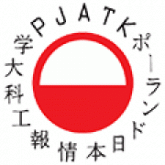Registration & Documents
Candidate must register online and upload required documents (The required documents depend on whether the candidate is a graduate of PJAIT or not)
Interview
Admissions are based on portfolio assessment and interview. Interviews take place on‑site at PJAIT (online only for candidates abroad). To apply, select a date in the recruitment portal and pay PLN 150. The candidate's PORTFOLIO must include artistic achievements: selected art or design works. During the interview, you’ll discuss your portfolio, present your proposed Master’s project and complete an English check (waived if you hold a C1 certificate or earned your BA in English).
Link to full Admisson Rules
Graphic Design and Multimedia Art, Master's degree, Full-time
General information
The study of graphic design and multimedia arts is an interdisciplinary program, imparting thorough knowledge, awareness and competence in the creation of communication.
Classes and workshops are conducted by artists, designers, engineers representing different nationalities, cultures and academia. area The considered design problems go beyond the local area, which gives the opportunity to see the role of the contemporary designer in the context of the global needs of civilization. Selected projects, created in cooperation with representatives of companies and institutions, are realized and implemented. This gives the opportunity to test their skills already during their studies.
Graphic design and multimedia art is all about practicing and developing design/art skills by using modern applications to create visual works in 2D and 3D environments. Students in the major work on a daily basis on projects using Unity, Blender, Maya, TouchDesigner and Adobe CC software. Realistic cooperation between friendly institutes and cultural units gives the opportunity to create attractive and unique visual, light, music and interactive creations.
Master's degree program
The second stage of study for the graphic design and multimedia art is complementary master's degree, which is held in the Full-time mode and lasts 3 semesters.
Graphic Design and the Art of Multimedia is a course taught exclusively in English, created on the basis of ten years of work in an international design environment and the experience (during two years of pandemic restrictions) of moving educational and creative activity into the sphere of the Internet, the intensive development of blended learning. The spread of this form of education and social interaction has increased the demand for employment of digital graphic designers.
Anticipating the growth of the design market for the Internet and Smart Environments, the Graphic Design & Multimedia Art program prepares graduates to work for an international community communicating with digital tools in a complex reality, taking into account both our real and virtual environments.
Education in the field of Graphic Design and Multimedia Art at the graduate level is provided in three modules:
- humanities-research, which prepares you to acquire and analyze materials needed for advanced individual artistic projects and activities in a complex international environment;
- computer-practical, equipping students with the necessary knowledge, workshop skills and advanced tools for the implementation of interdisciplinary, individual artistic projects and activities;
- art and design, developing and deepening at an advanced level specialized creative skills and enabling, under the guidance of mentors, to create individual projects or undertake advanced artistic activities in the field of digital art.
The program was created based on the staff resources of the Polish-Japanese Academy of Information Technology. Field of study Graphic Design and Multimedia Art in English was created jointly by artists, engineers and humanities researchers. In view of the needs of the rapidly growing market of creative industries for the virtual world, the program at Level 7 has expanded and deepened the component of training in information technology tools. Accordingly, the interdisciplinary program includes 70% of classes in the discipline of Fine Arts and Art Conservation (5% of these classes are related to knowledge of theoretical humanities subjects necessary for academic training in the field of art) and 30% of classes in the discipline of computer science technical and telecommunications. A person graduating from the program is prepared to work in international, interdisciplinary creative teams, in the position of a leading designer or artist-leader of multimedia graphics. Depending on the chosen scope, he/she can work in real space, XR, VR, AR, solving design or artistic problems, taking into account UX and UI and using AI tools and creating their own independent projects and artworks.
Specialized areas
The strongly internationalized curriculum master's degree prepares you to work in interdisciplinary teams. Students, creating a concept for an original project, with a topic of their choice, have the opportunity to verify their ideas and design solutions in an interdisciplinary environment.
Each person works under the supervision of a three-person mentoring team of their choice, which includes representatives of the humanities, engineering and arts. area and area of design materials, tools and methods of implementation, are discussed and selected for each student individually. The project is developed during a series of consultations. The training serves to deepen professional skills.
In 3 semesters, a student gains 90 ECTS, part of which can be obtained at a partner university or at a European design studio of choice, using Erasmus+ funding. Thanks to the intensive exchange, those studying have the opportunity to participate in many workshops, presentations and exhibitions, and their work, already during their studies, can be recognized internationally.
AREAS:
- LAB XR
- LAB UR
- LAB AI
Link to full description of each specialized areas: https://pja.edu.pl/en/projektowanie-graficzne-i-sztuka-multimediow/projektowanie-graficzne-i-sztuka-multimediow-studia-ii-stopnia-stacjonarne-anglojezyczne/zakresy-studia-ii-stopnia/

